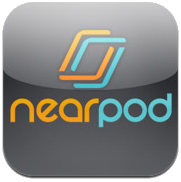Management and C-level folks love to find find new tools that will make their teams more productive. It’s exciting to find a new app, Software as a Service (SaaS) or social network that will increase efficiency or solve a perceived performance problem. That excitement tends to fade when the new tool is introduced to a team… and no one wants to use it.
You can give people the most revolutionary tool ever… but if you don’t train them on it, and show them what’s in it for them, you will not maximize use of the tool. And in the worst of scenarios, the tool will be snickered at and quickly forgotten, added to the pile of “management whims” that never made it into practice.
What’s In It For Me?
I recently read a Businessweek article discussing how the “Millenial” generation (of which I am a member) refuses to comply with corporate travel policies. Instead of using the company-sponsored hub for booking flights, cars and hotels, these pesky Millenials are using sites like Kayak.com and Travelocity.com to book cheaper flights at more convenient times. In response, American Express has gamified their travel dashboard with points, badges and leaderboards to make the process of booking corporate travel more like a game. The jury is out on whether this new approach will increase compliance with corporate travel policies.
More interesting than the article itself were the comments, where a lively discussion had emerged surrounding the ethics of using a corporate-sponsored travel hub for the sake of consistency and liability versus booking travel independently for added convenience and potentially decreased costs. Most of the comments, on both sides of the issue, were not made by Millenials, but by Gen X’ers and Baby Boomers. It seems lots of people hate their corporate travel policy, finding that it gets in the way of them doing their jobs.
A corporate travel policy is a tool employees are expected to use. And for most of them, it sounds like this tool is not meeting their needs.
Demonstrate the Value of Every Tool
We will be the first to proclaim the benefits of game-based learning and gamification. Many of our solutions include these approaches, and they are proven to increase motivation in learners. But it is even more important to demonstrate the value of a tool to your employees. Show them how the tool benefits them, and how it benefits the company. Does it save them time? Save the company money? Is it easy to use? Do they know how to use all of the features?
Providing adequate training and support for a company tool is important… and that training will include a “what’s in it for me?” value proposition when properly designed. When you conduct a Needs Analysis to determine what type of training is needed, you might find that the tool itself is outdated or missing some key features. Then, the problem becomes less about the need for training, or the attitude of your learners, and more about a need to find a better tool.
Case in point
 One of our Fortune 500 clients was interested in improving its instructor-led training sessions. In a capabilities presentation, we introduced them to Nearpod, a tool for delivering interactive lectures using the iPad. We conducted train the trainer sessions with their facilitators to show them the tool, demonstrate how it will make their jobs easier and their presentations better, and give them some best practices.
One of our Fortune 500 clients was interested in improving its instructor-led training sessions. In a capabilities presentation, we introduced them to Nearpod, a tool for delivering interactive lectures using the iPad. We conducted train the trainer sessions with their facilitators to show them the tool, demonstrate how it will make their jobs easier and their presentations better, and give them some best practices.
Since Nearpod would be new to the facilitators’ work flows, we knew we had to provide informative training to frame the experience and get them motivated to dive in. Without this training, it would be much harder to introduce a new tool and expect facilitators to start using it right away.
Link Tools and Training
Take the time to properly introduce your organization’s tools to employees. Show them the value it will add for them, and explain how it adds value to the company. Let them practice using the tool and give them ideas for getting started.
…And if none of that works, it might be time to try a new tool.





